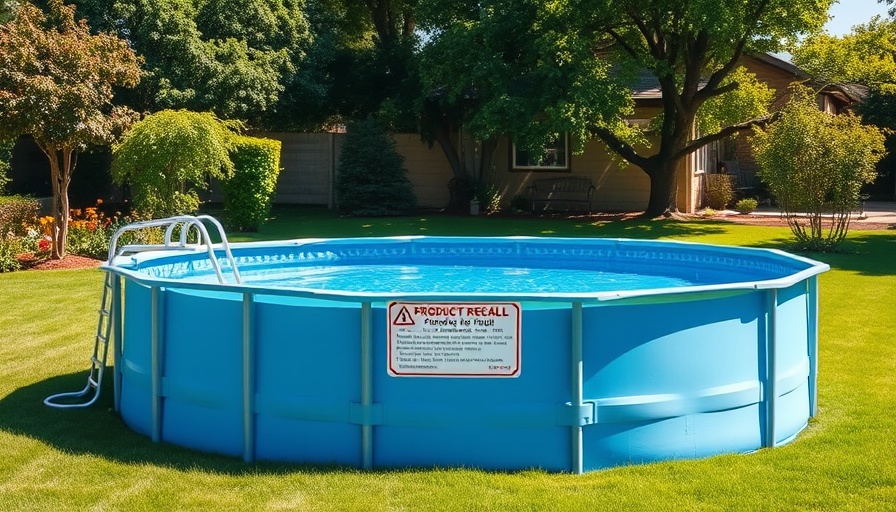
Important Recall: Stay Safe This Summer
As summer temperatures heat up, many families turn to their above-ground pools for relief from the sweltering heat. However, recent developments have shown that safety must come first. The United States Consumer Product Safety Commission (USCPSC) has issued a significant recall affecting over 5 million above-ground pools. This is due to a serious drowning hazard associated with the compression straps found on several popular models.
Understanding the Hazard: What’s Going On?
The USCPSC reported alarming incidents, including nine tragic deaths of young children aged between 22 months and 3 years. These incidents occurred because the compression straps used in the pool designs can create footholds. Often, young children can use these footholds to gain access to the pool even when ladders are removed, significantly increasing the drowning risk.
Which Pools Are Affected?
If you own an above-ground pool that is 48 inches or deeper and was manufactured by either Bestway, Intex, or Polygroup since 2002, you may be at risk. It’s essential to check whether your pool model matches the recalled items to ensure your children’s safety.
Taking Action: What Should You Do?
If you find that your pool is under recall, there’s no need to panic. The USCPSC suggests requesting a repair kit from your pool’s manufacturer, which includes a replacement rope to attach at various points to effectively maintain the pool's intended compression feature, thereby eliminating the foothold risk. Until the repair is completed, it is imperative to keep a close watch on your children around the pool or, if possible, drain the pool to prevent any accidents.
Preventative Tips for Pool Safety
While awaiting your repair kit, consider implementing additional safety measures. Here are some proactive steps you can take:
- Install Pool Alarms: Alerts can notify you if someone enters the pool area unexpectedly.
- Always Supervise: Never leave children unattended near the pool, even for a moment.
- Teach Water Safety: Provide swimming lessons for children to boost their confidence in water.
How This Affects You: Broader Implications
This recall highlights a pressing need for increased vigilance in water safety practices as families enjoy swimming during these warm months. It serves as a reminder for pool owners everywhere, not just those affected, of the best practices to ensure safe swimming environments for children. Strengthening education around safe water practices can help mitigate risks and safeguard lives.
As the summer continues, keeping these safety measures in mind not only protects your loved ones but also enhances your enjoyment of this cherished season. Let's prioritize safety to ensure every pool day is fun and worry-free!



Write A Comment